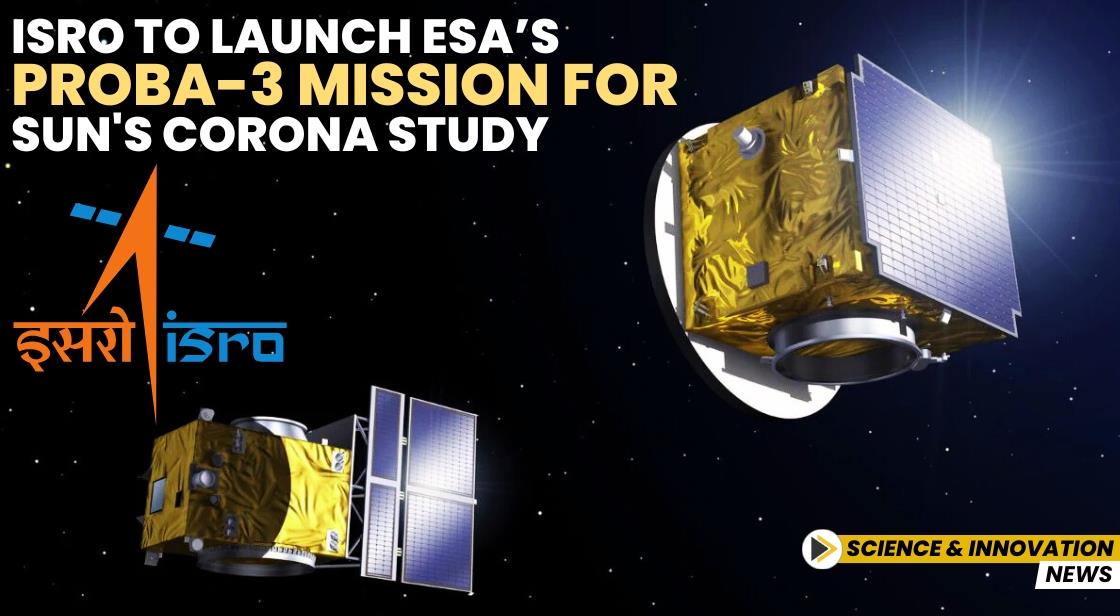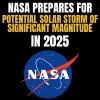ISRO to Launch ESA’s Proba-3 Mission for Sun's Corona Study

News Synopsis
The Indian Space Research Organisation (ISRO) is set to launch the European Space Agency's (ESA) Proba-3 mission on December 4, 2024. This mission is aimed at studying the Sun's corona, the outermost layer of the Sun's atmosphere, using innovative technology and precision formation flying. The launch will take place from ISRO's Satish Dhawan Space Centre in Sriharikota, India, using the trusted Polar Satellite Launch Vehicle (PSLV-XL).
Key Features of Proba-3 Mission
Proba-3 is a groundbreaking two-satellite mission designed to observe the Sun’s corona in a way never done before. The mission will employ a technique called precision formation flying, where two satellites will fly in precise formation, separated by 150 meters in orbit. This formation will allow the satellites to create artificial solar eclipses, providing scientists with valuable data about the Sun’s atmosphere.
The two satellites include the smaller satellite called the Occulter, which will block the Sun's disc, and the larger satellite known as the Coronagraph, which will observe the corona. This technique will provide eclipse-like conditions for six hours of each 19-hour orbit, allowing for continuous study of the Sun’s atmospheric dynamics.
Mission Collaboration and Funding
Proba-3 is a collaboration between several European countries, including Spain, Belgium, Poland, Italy, and Switzerland. The mission’s estimated cost is 200 million euros. The Proba-3 mission is also expected to enhance the understanding of precision formation flying techniques, which could play a crucial role in future satellite constellations.
ESA-ISRO Partnership
ISRO has been chosen to launch Proba-3 because of its cost-effective and reliable PSLV-XL rocket. ESA determined that PSLV-XL is a more economical option compared to ESA's heavy-lift Ariane-6 and medium-lift Vega-C rockets, which were either too powerful or insufficient for the mission's requirements. This will be ESA’s first collaboration with ISRO since the Proba-1 mission in 2001, further strengthening the ties between the two space agencies.
Mission Objectives and Goals
Proba-3 will orbit the Earth in a highly elliptical orbit that reaches over 60,000 kilometers. The satellites will generate around 50 artificial eclipses per year, enabling scientists to study the structure, dynamics, and heating processes of the Sun’s corona. The mission will also focus on understanding Coronal Mass Ejections (CMEs), which have the potential to affect space weather. One of the key research questions is why the Sun's corona is significantly hotter than its surface, a phenomenon that Proba-3 aims to investigate.
Instruments on Board Proba-3
The Proba-3 mission will carry three key instruments, including the ASPIICS coronagraph, which will help capture images and data about the Sun's corona. The mission aims to provide valuable early results following the commissioning phase, expected to be completed by March 2025.
Conclusion
The Proba-3 mission, a collaboration between ESA and ISRO, represents a significant step forward in the study of solar physics. By using precision formation flying to observe the Sun’s corona, Proba-3 will offer unprecedented insights into solar phenomena, enhancing the understanding of space weather and solar dynamics.
You May Like









